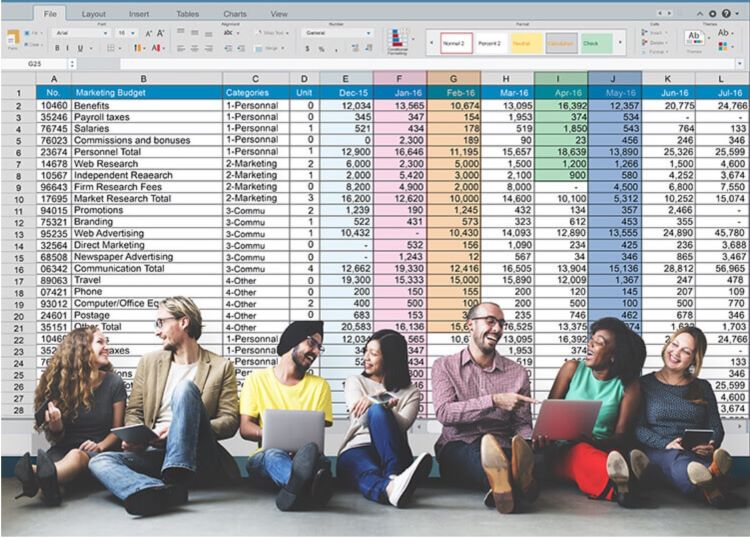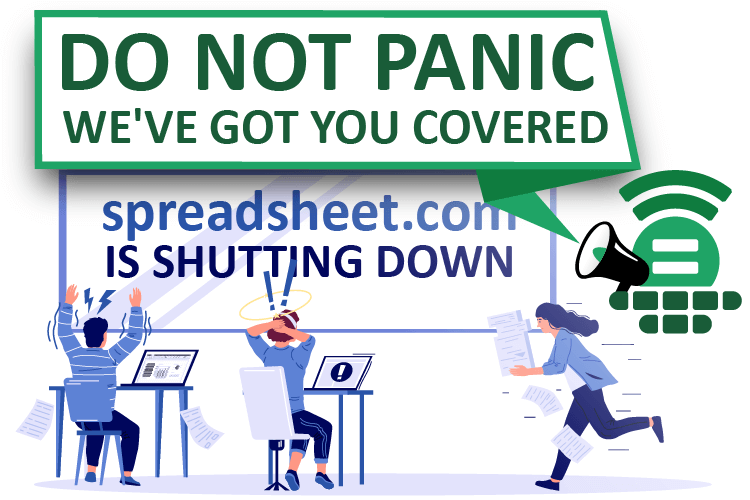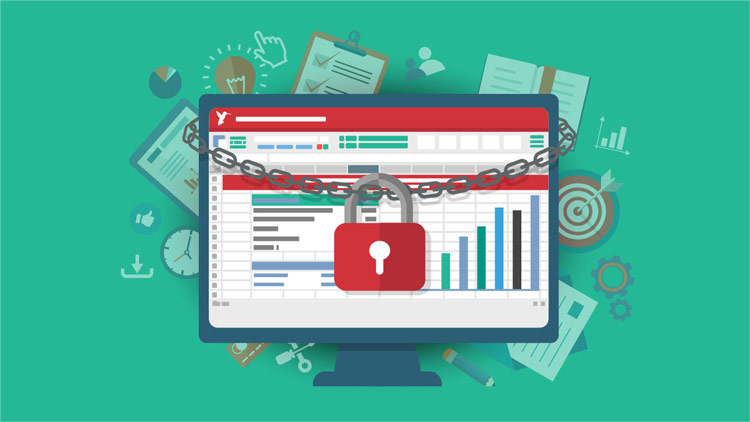Transforming Excel Sheets
For decades, Microsoft Excel has been a foundational component in the way global businesses collect, analyze, track, and report data. As powerful and flexible as Excel is on its own, however, it can now also serve as a stepping-off point to something even more dynamic and efficient.

By using Sheetcast to convert Excel spreadsheets into web application you can streamline your workflows in ways you never imagined.
Harnessing Sheetcast to Expand Your Excel Capabilities
Excel will continue to serve its purpose as a versatile data tool for individual users and small, contained teams. But in today’s collaborative, fast-moving, web-based world, there are times when you need to expand its boundaries even further. While it’s possible for teams to work together with spreadsheets on the web, doing so can require a good deal of care and attention. When multiple users simultaneously edit an online spreadsheet, everyone must remain vigilant for version conflicts, which could otherwise lead to data discrepancies and errors.
Meanwhile, some members of the team may be less expert in Excel than others and face a steep learning curve before they can successfully contribute to a spreadsheet. Indeed, some members of the team may not have access to Excel at all.

Collaborating in Excel also usually involves a desktop or laptop computer. While it is technically possible to open and edit a complex spreadsheet on a tiny smartphone or (slightly less tiny) tablet, doing so requires patience and a keen eye.
Then there’s the question of data security. Collaborators must take care not to expose sensitive information when sharing the spreadsheet. Managing access and permissions for different users can also prove complicated. You may need to ensure certain team members can’t inadvertently overwrite or delete critical data, or access to key parts of the spreadsheet, or mess in areas they shouldn’t such as formulas.
The next stage in the evolution of Spreadsheet

The first improvement you’ll notice is in data collaboration. When you convert Excel to a web application, you make it possible for multiple users to contribute to the same data simultaneously. The bottlenecks of the past, such as when a shared Excel file was locked while one person edited it, are gone. Meanwhile, built-in data validation rules are automatically enforced, protecting data integrity from careless or invalid entries.
Build an app from Excel, using Sheetcast, and you instantly multiply the types of users who can contribute. Anybody can interact with the data, from anywhere, on any device, whether or not they have any existing Excel skills.
Crucially, a Sheetcast works with data in real time. Any time a user inputs new information, it becomes instantly incorporated into your data. Until now, managers might have been impressed when you emailed them a PDF report you generated a day earlier, breaking the data down into compelling, colorful graphics. Imagine how they’ll feel when they realize they can pop open an advanced reporting and analytics dashboard on their phone or laptop, any time day or night, and review an up-to-the-second snapshot of data trends and conditions.
From Data to Database: Excel as an Online Tool

By converting Excel to an online database, a Sheetcast can enhance data accessibility and integrity. Multiple users can contribute to, view, or edit the same data simultaneously without the risk of being held up by a locked file or derailed by version conflicts. This promotes active, real-time collaboration and eliminates data-access bottlenecks.
With an online database, administrators can more easily control user authentication and access controls, allowing them to define user roles and permissions. Only authorized users can access, view, edit, or delete specific data, preserving your data security. And with defined data validation rules and constraints, Sheetcast helps prevent the entry of invalid or inconsistent data.
A Sheetcast also enables you to share specific data with specific users. For example, you can convert your Excel data to a website if you wish to keep the public informed of certain news and trends. Meanwhile, you can provide management with more confidential, sensitive information—even triggering emailed alerts when specific events are detected in the data.
Interactive Web Forms from Excel

To you, an Excel spreadsheet might be your happy place, its matrix of cells and workbooks endlessly familiar, even comforting. To a non-tech user, however, a complex spreadsheet can represent a dizzying mass of confusion.
Sheetcast, on the other hand, translates data—both the input and the output—into sleek, manageable user interfaces anyone can navigate. For instance, it might convert Excel into a straightforward online form, with clearly labelled fields, drop-down options, and buttons. A contractor at a distant work site, for example, could pick up his phone, enter measurements and location data, and perhaps even upload photos. A manager might open an analytics page, input a date range into a form, and view an instantly generated customized graph.
Sheetcast Scenarios: A World of New Possibilities

By using Sheetcast to unlock hidden power and capabilities from your Excel spreadsheets, you create new opportunities to streamline all kinds of workflows. Here are just a few possible scenarios.
That work-site contractor we just described pops open a laptop, uploads measurements, specifications, material requirements, etc., and provides an instant quote right on the spot.
A field inspector with an iPad enters report data into a straightforward form, uploads photos, videos, and recommendations, and an fully formatted PDF report is instantly sent out to specified supervisors and managers.
An office manager sends out an invitation to a company potluck social. The employees click a link to open a form that shows what dishes people have already signed up for plus any remaining gaps in the menu. With a quick click, they say whether they can come and indicate what dish they plan to bring.
After years of managing their inventory manually, a mid-size retailer creates an app from their existing Excel spreadsheet. The inventory is now updated with each individual new sale, allowing management to monitor and analyze trends in real time. Emerging shortages trigger email alerts before they become critical.
An online survey, completely customized and branded, collects answers, displays the results so far, and delivers new subscribers to the company’s email list.
Accounting systems, financial forecasters, client portals, project management, intranet document managers—the possibilities are limited only by your imagination.
Step-by-Step: Your Path to a Custom Web App

The Sheetcast.com home page includes a number of step-by-step demonstration videos illustrating just how quickly and simply you can incorporate online forms, detailed report pages, workflow automations, and many other advanced features into your own custom web app. Spend a few minutes watching the videos and allow them to spark your imagination.
After that, it’s easy to get started:
- Select a data-management task you’d like to reimagine as a web application.
- Download and install the Sheetcast add-in for Microsoft Excel.
- Build an Excel spreadsheet to collect and process your data, or choose a spreadsheet you already use for the task.
- Open the spreadsheet in Excel and launch the Sheetcast add-in.
- Add pages with the features you desire, combine them into attractive dashboards, add automated reports, etc., and tweak the app until it looks and performs precisely as you imagined.
- Save and close the project.
- Share the web app URL with your users!
Conclusion: Embrace the Web App Future

Excel has always been great, but now it has evolved into the gateway to something much greater. With your existing knowledge of Excel, you can now design, create, and launch powerful, versatile custom web apps.
Custom software used to be accessible only for companies with long timelines and deep pockets. Sheetcast has disrupted the market by putting true software customization within everybody’s grasp and budget. A web application no longer demands months of development and tens of thousands of dollars. It’s something you can do yourself, quickly and affordably, anytime a new inspiration pops into your head.
Embrace the web app future. Contact us today.





















